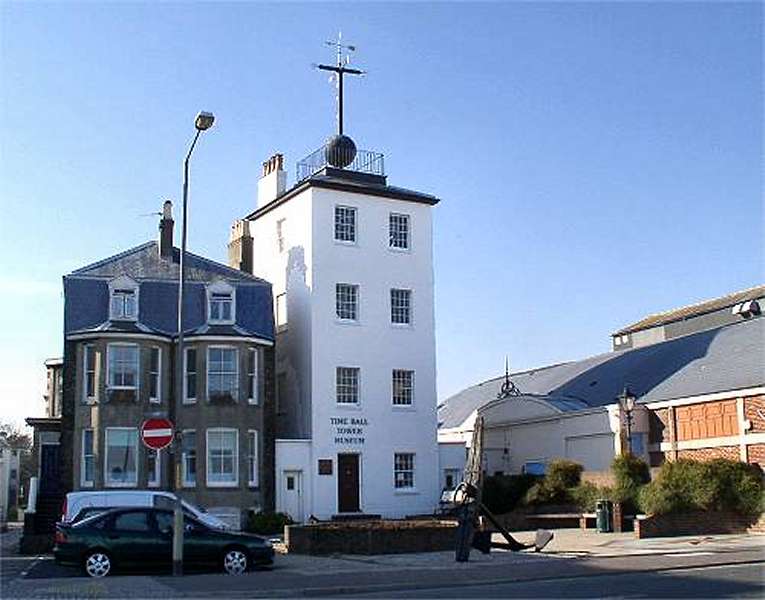Deal Timeball Tower

Today, the Timeball Tower on Deal seafront is a popular visitor attraction administered by the Deal Museum Trust. Displays in the building trace the historical importance of the Timeball to marine safety and the hourly operation of the rooftop ball between 9am and 5pm during the summer months provides a novel experience for passers by.
Deal's Timeball was installed in an existing semaphore tower in the 1850s to provide accurate visual time signals for shipping in the English Channel. By the raising and dropping the ball at agreed times, ships' masters were able to set their chronometers precisely to help ensure reliable navigation. Deal's Timeball was administered by The Royal Observatory at Greenwich from 1864 until 1927 when the introduction of radio time signals had rendered it obsolete. The building was sold at auction, later acting as a tourist information centre and, in 2004, opening as today's Timeball Tower Museum.
The concept of providing accurate timechecks using timeballs stemmed from an early installation at Portsmouth, followed by one at Greenwich and the development of cable connections to pass automated control signals. The Deal timeball became operational early in 1855. Each day, the ball started to rise at 12.55 Greenwich Mean Time, halted halfway up the mast and at 12.57 rose to the top, before dropping at 13.00 precisely.
Read more about Deal's Timeball
The Deal Time Ball (1864-1927):
The Deal Timeball and its Place in Communications History:
Deal Timeball Tower Museum Trust: www.dealtimeball.co.uk/
This page was updated on October 27, 2019